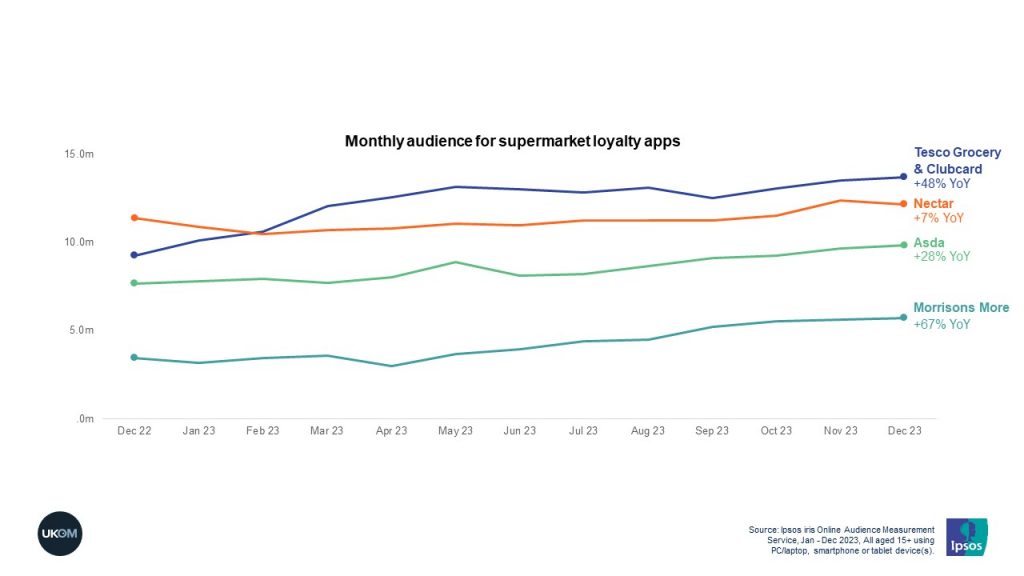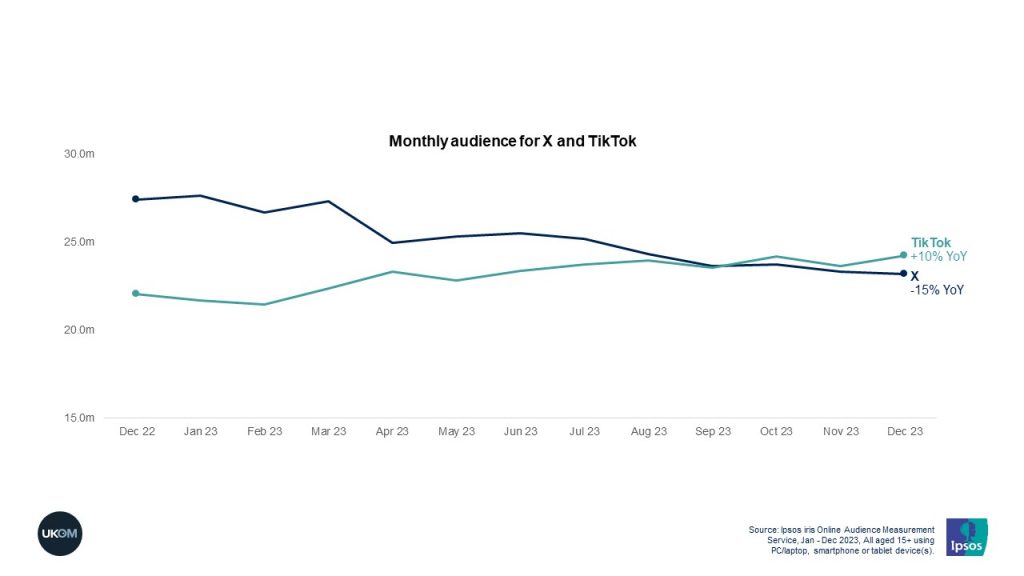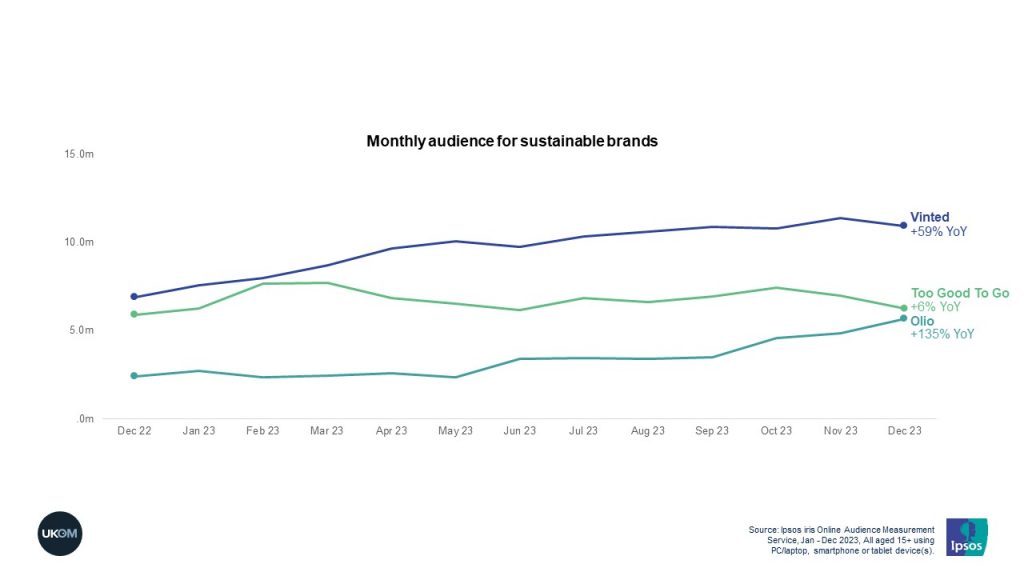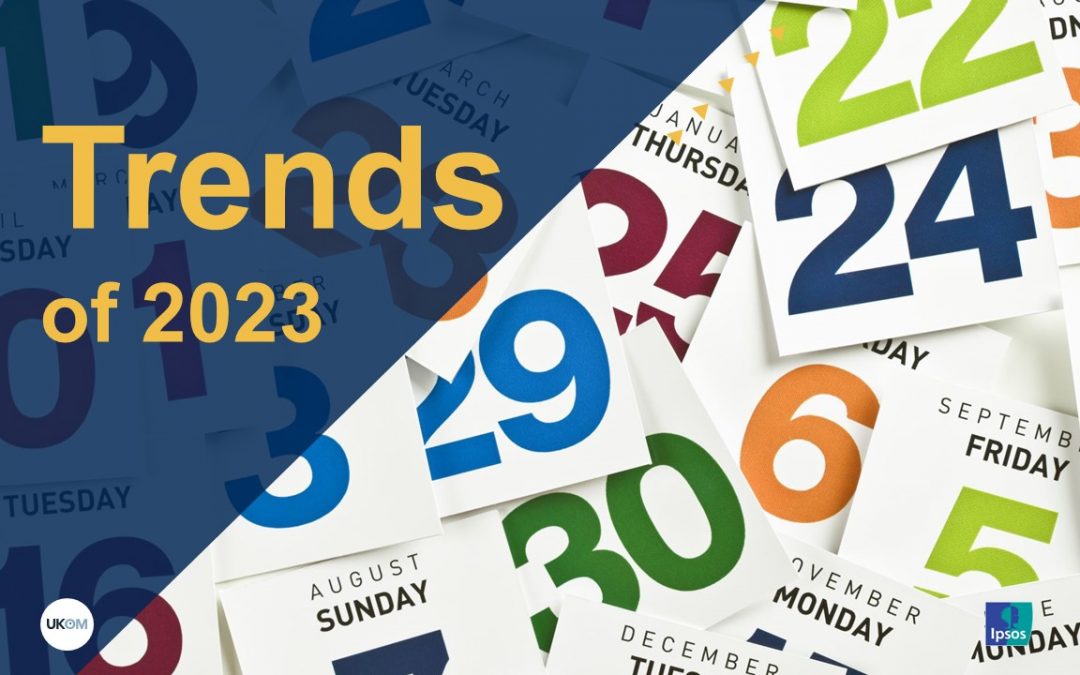Ipsos iris is a powerful tool for giving you rich and regular insights on your users, as well as those of your competitors.
However, it can also help you explore higher-level and longer-term trends across your category, across adjacent markets and even across the wider economy.
We’ve used Ipsos iris data to unearth four emerging trends from 2023 that that will hopefully help inform and enhance your planning for the year ahead.
1. The rise and fall and rise of ChatGPT

ChatGPT exploded at the beginning of the year, with the number of monthly users increasing nearly threefold in just four months between December 2022 and March 2023.
This rapid rise was followed by a dip in total users in the Summer, when fewer students are studying and more workers are out of the office.
However, a post-summer bump coupled with a steady increase in app users helped ChatGPT to a new high of 4.4 million monthly users in November 2023.
As more players enter the AI space, and the technology becomes embedded into a wider array of sites and apps, monitoring AI usage will become more complex. For now though, ChatGPT remains a handy barometer, and its performance suggests there’s still plenty of room for growth in the year ahead.
2. Evolution of loyalty

In our retail webinar in September, we showed the growing importance of loyalty to the grocery sector: Asda has rapidly built an audience for its Rewards app, while Sainsbury’s has followed Tesco by offering exclusive pricing to loyalty card holders.
Since then, Morrison’s has reaped the benefits of refreshing its own loyalty app, Morrisons More, which has seen users increase by 67% year on year.
With the likes of Boots now also offering exclusive prices for Advantage card holders, and Uber launching a membership proposition, it’s clear that the strategic importance of loyalty and membership has extended far beyond grocery. The number of schemes will only grow this year, and we’ll be tracking which brands manage to succeed in a crowded field.
3. Switch in social media

We all know social media is huge – our deep dive into the category shows that we spend a third of our time online using it – but its size shouldn’t make us overlook its subtleties. Each individual platform will be best suited to different brands and different audiences, but even these combinations will change as new players enter the market and old players evolve their offering.
For example, our data shows that that X’s audience fell by 15% over the last year, which represents a loss of 4 million monthly users. Meanwhile, TikTok’s audience has increased by 10% over the same time period, which saw it register more monthly users than X for the first time in October.
While it’s hard to predict what’s next for X, it seems inevitable that TikTok will continue to grow, as it builds its reach – and engagement – far beyond Gen Z.
4. Growth of sustainability brands

Two of the fastest growing brands online last year were about re-purposing unwanted items: Vinted allows users to sell old or unwanted clothes, while Olio allows users to give away or lend unwanted items or food to people in their local area.
Despite experiencing a slowdown in its growth, Too Good To Go surpassed Deliveroo in monthly users for eight out of twelve months in 2023.
All three brands have built large audiences very quickly, clearly demonstrating that there is an appetite for sustainable propositions out there. We expect these brands to continue growing in 2024, and will be keeping an eye out for new entrants into this space.

